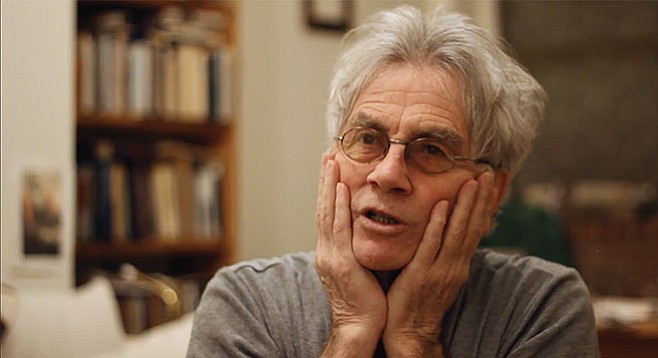For the most part, horror movie antagonists are somewhat tangible, whether they’re human killers, monstrous creatures, or demonic spirits. Sometimes, however, the villain isn’t so clear cut. Movies like It Follows, Sole Survivor, and the Final Destination movies have more abstract villains, and therefore, they are a different kind of frightening. The 1988 movie Pulse also falls into the unconventional antagonist category.

Pulse is about a young boy named David (child star Joey Lawrence from “Gimme a Break” and “Blossom”) who comes to visit his father, Bill (Wild’s Cliff De Young), and new stepmom, Ellen (Old Enough’s Roxanne Hart) in Los Angeles. It’s an awkward time for the neighborhood – one of the residents has just been killed under mysterious and unexplained circumstances. With the help of a new friend named Stevie (Joey Lawrence’s real-life brother, Matthew, from “Boy Meets World”) and a crazy old neighborhood man (Harold and Maude’s Charles Tyner), David figures out that the murderous culprit is a paranormal surge of electricity that travels from house to house through the power grid, and his father’s house is next in line.

Written and directed by Paul Golding (whose other big claim to Hollywood fame was writing the screenplay to Beat Street), Pulse is, in many ways, a typical eighties horror movie, only with a very atypical antagonist. The electrical surges stalk their prey in the same way that a masked psycho killer would. The film is packed with heavy-handed, spoon-fed exposition coupled with cheap horror stereotypes (Charles Tyner’s old man character is the spitting image of Crazy Ralph from the Friday the 13th series, with his cryptic “Does it talk to you? The voice in the wires?” ramblings). Replace the final girl with a twelve year old boy, and Pulse is a slasher movie.

The biggest strength in Pulse as a movie lies in how well Golding crafts his suspense scenes. There are a number of instances of maddening tension in the film, classic examples of the Hitchcockian “show them the bomb” theory. The most memorable, which is also very reminiscent of a scene from Paranormal Activity 4, involves David getting trapped in a garage while the energy pulse starts the car and floods the room with carbon monoxide. Another scene involves the pulse cranking up the water heater to a scalding level while Ellen is in the shower. There are also great Final Destination-esque sequences involving table saws, garbage disposals, metal screws, and glass shards. If there’s a flaw in the suspense scenes, it’s that they don’t go on long enough; Golding lets his audience off the hook a bit too early. But then again, the audience’s collective heart might not be able to take much more of the tension in some places.

Cinematographer Peter Lyons Collister (Halloween 4: The Return of Michael Myers) does some cool stuff with the photography in Pulse. In order to capture the havoc that the electronic pulse is creating, several macro photography shots are used, the camera zoomed way in on melting solder, overloaded circuits, or water heater pilot lights, almost giving the faceless villain a personality by letting the audience see what it’s up to before it happens. The hyper-close lens work is augmented by some sparking and shocking visual effects, so the audience feels the threat instead of just seeing it.

The musical score for Pulse was composed by Jay Ferguson, who was a member of the rock band Spirit before scoring horror classics like A Nightmare on Elm Street 5: The Dream Child and Bad Dreams, but really made his mark on the pop culture world by writing the opening theme to “The Office.” Ferguson’s score for Pulse is a standard electronic eighties score, with synthesized keyboards and canned drum machines, but full of syncopated rhythms that are just a bit offbeat with seemingly random stabs. It makes for a suspenseful and uneasy listening experience, ratcheting up the tension and causing the audience to subconsciously lean forward onto the edge of their seat. There are very few memorable melodies or motifs in the score, but it does its job as a pounding accompaniment to the visual chaos that’s onscreen.

The idea of electrical current as a horror movie villain sounds strange, but Pulse makes it work. It just goes to show that you don’t need a masked killer or a spooky ghost to have an effective fright flick.

